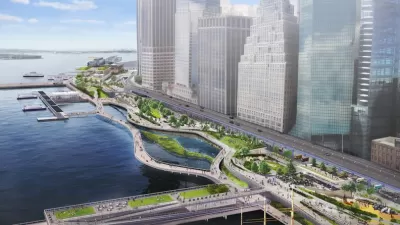Thanks to innovative advancements in permeable pavements and vertical farming, modern urban planning takes an action-oriented approach that retains its traditional focus of meeting residential needs.

Although the concept of urban planning as a profession only emerged less than a century ago, people have been laying the groundwork for bustling cities for much longer than that.
For example, in 1736, Pope Benedict XIV commissioned architect Giovanni Battista Nolli to make the most accurate plan drawing of Rome ever created.
Nolli’s approach took both indoor and outdoor spaces into account and designated them as having either public or private access. That level of detail allowed developers to not only create dwellings, but also control how individuals moved within and between them.
Then, in 1903, Ebenezer Howard looked for a way to control the pollution created by society’s growing dependence on machinery.
He suggested smaller cities with fewer than 32,000 inhabitants each. Howard envisioned cultivating gardens and other green spaces in those locations to give people a blend of urban and simulated countryside living.
A significant part of urban planning involves understanding what people need to live happily, as well as considering necessary building and structures that will inevitably have to be accommodated. For example, a modern industrial park can occupy millions of square feet, and parking alone can take up 100 million square feet in some cities.
However, as scientists have become more aware of issues such as sustainability, city planning has become more diverse in the needs it addresses.
Throughout the rest of the 21st century, a heightened awareness of the future and what people need to live contently should become increasingly apparent and emphasize the continual evolution of the urban planning sector.
Preparing for Climate Change
Climatologists frequently pointed to climate change as one of the primary factors that made the 2017 hurricane season so destructive.
With that in mind, some urban planners in areas of particular risk might evaluate ways to make their cities less susceptible to damage from strong storms.
However, more recently, even companies targeting investors warn it’s time to make climate change readiness one of the main objectives in urban planning.
A December 2017 report from Moody’s Investors Service indicated that cities failing to plan for the effects of climate change and do what’s necessary to reduce them could see adverse impacts on municipal bond ratings. Then, it could become difficult for city planners to get the required financing for projects.
One method of adapting to climate change involves creating “sponge cities.” They use permeable pavements, rooftop gardens that absorb rainwater, and similar approaches to manage water.
Climate change is not the only factor that leads to increased rainfall. In China, where urban planners are employing water management techniques more frequently than in the past, analysts believe cities around the world will start following suit to deal with global warming.
For example, India is dealing with severe flooding due in part to blocked drainage systems and structures built near bodies of water that obstruct rainfall drainage. Critics assert that urban planners in that country have not implemented long-term plans to mitigate the issue, but suggest using some of the techniques proving successful in China.
Fewer Resources Required for Farming
Vertical farming is another emerging technology likely to feature prominently in the urban planning operations of the future. It involves growing crops in towers that require substantially less space than conventional farms.
The technique also needs a comparatively tiny amount of water and depends on sensors that monitor the crops during the growing periods to ensure the best yields possible. Furthermore, LED lights provide year-round illumination.
A study from the Centers for Disease Control and Prevention (CDC) found only 9 percent of Americans eat the recommended minimum daily intake of vegetables.
The likelihood of consuming enough produce is even less for impoverished individuals. If vertical farming takes off, urban planners could make it easier for people to get fresh produce, perhaps without even needing to go outside their communities.
Connected Cities Entering the Mainstream Consciousness
Urban planners who want to keep pace with competitors would be wise to expand their horizons and become familiar with the techniques used to construct so-called connected cities, too.
Sidewalk Labs, a company associated with Google, is underway with plans for Quayside, an ultra-high-tech, 12-acre plot of waterfront land in Toronto. If things go well, it wants to expand the concept to include 800 total acres.
Sensors and cameras will gather data about how people use the city, aiding urban planners in pinpointing what’s working well and what isn’t. Eric Schmidt, chairman of Alphabet Labs, says the project represents “almost ten years of thinking about how technology can improve people’s lives.”
However, some people aren’t so sure if these ambitious cities are viable. With such a focus on technologies, other factors can get overlooked, such as policies and long-term investment needs. Since Quayside’s planners hopes to use data to drive their decisions, perhaps the collected findings could give insights related to the aspects that characteristically get ignored.
This glimpse of how urban planning has evolved and what will likely happen in the future is undoubtedly fascinating.
Throughout all the changes, a focus on catering to residents’ needs has remained.
When urban planners perpetually investigate ways to keep current residents happy while appealing to future residents and enacting sustainable methods for eventual inhabitants who are perhaps not even born yet, they can achieve meaningful outcomes.

Trump Administration Could Effectively End Housing Voucher Program
Federal officials are eyeing major cuts to the Section 8 program that helps millions of low-income households pay rent.

Planetizen Federal Action Tracker
A weekly monitor of how Trump’s orders and actions are impacting planners and planning in America.

Ken Jennings Launches Transit Web Series
The Jeopardy champ wants you to ride public transit.

Crime Continues to Drop on Philly, San Francisco Transit Systems
SEPTA and BART both saw significant declines in violent crime in the first quarter of 2025.

How South LA Green Spaces Power Community Health and Hope
Green spaces like South L.A. Wetlands Park are helping South Los Angeles residents promote healthy lifestyles, build community, and advocate for improvements that reflect local needs in historically underserved neighborhoods.

Sacramento Plans ‘Quick-Build’ Road Safety Projects
The city wants to accelerate small-scale safety improvements that use low-cost equipment to make an impact at dangerous intersections.
Urban Design for Planners 1: Software Tools
This six-course series explores essential urban design concepts using open source software and equips planners with the tools they need to participate fully in the urban design process.
Planning for Universal Design
Learn the tools for implementing Universal Design in planning regulations.
Heyer Gruel & Associates PA
Ada County Highway District
Institute for Housing and Urban Development Studies (IHS)
City of Grandview
Harvard GSD Executive Education
Toledo-Lucas County Plan Commissions
Salt Lake City
NYU Wagner Graduate School of Public Service






























